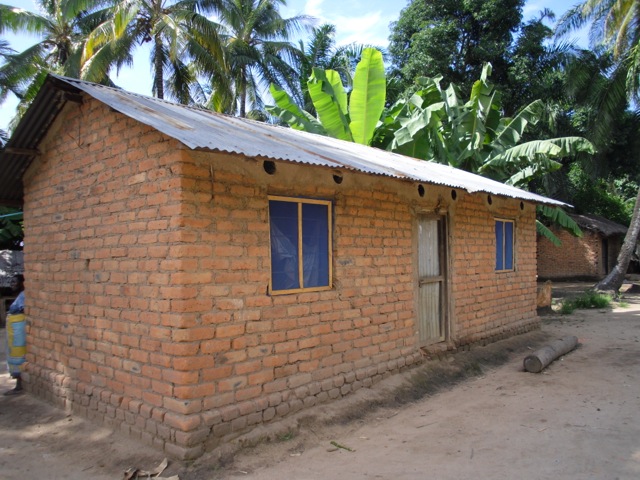The eaves of death for malaria mosquitoes

Related topics
Health Innovation Health, Demographic Change and Wellbeing Belgium Germany Netherlands Tanzania, United Republic Of United States of Americadate: 15/12/2015
Project: A low cost Mosquito Contamination Device...
acronym: MCD
See also: CORDIS
Contact: Contact
Over the past two decades global efforts to prevent malaria and treat its victims have contributed to reduce infection dramatically and save millions of lives. Even so, each year around 200 million people catch malaria, and 600 000 die from the disease, mostly children and women in Africa, according to the World Health Organization.
Prevention, through insecticide-treated bednets and indoor sprays, is one of the best ways to win the battle. But mosquitoes are becoming resistant to insecticides – potentially reversing the gains made so far.
In response, the EU-funded MCD project has developed three new weapons against them – a special coating that transfers insecticides effectively to mosquitoes landing on it, insecticide-laced “eave tubes” to direct them to the coating, and a bednet patch.
The project began work in December 2012 and is now negotiating with a manufacturer in Tanzania to mass produce these low-cost devices and distribute them, says project coordinator Bart Knols of In2Care. The Netherlands-based research company specialises in developing products to control disease-transmitting insects.
“I have been working in the field of malaria research for the past 22 years,” says Knols. “I have never seen an idea move so fast from early research in the lab to field testing in the real world to potential commercialisation. This is simply amazing.”
Tubular protection
In2Care and CTF2000, another project partner, originally developed netting for trapping pollen. This has been repurposed for mosquito control using the netting coated with insecticide at one end of tubes that are placed in the walls of the households.
The tubes are to be inserted into the walls, under a building’s roof, its eaves, so they are called 'eave tubes'. Hungry malaria mosquitoes looking to feed on blood tend to enter such openings, naturally following the scent of humans and the trail of carbon dioxide they breathe out. The mosquitoes end up on the netting, and make contact with the insecticide.
Eave tubes are potentially more effective than indoor spraying, says Knols. They better prevent mosquitoes from entering a house. For indoor spraying to work, mosquitoes must first enter a house and land on a wall covered with insecticide, leaving them time to infect a person.
“With these tubes, insecticide is only applied to a small area – the netting,” he explains. “This means a major reduction in insecticide use, by about 95%, which is better for people’s health and for the environment.”
The team initially tested the eave tubes in 2013 in large outdoor cages in Tanzania. Within a night, two-thirds of the mosquitoes released were killed after contact with the tube netting.
In November 2013, MCD outfitted 20 houses with eave tubes in Igombati, a small Tanzanian village. To date, six months later, the coating has remained an effective mosquito killer and it can be considered a competitive alternative to indoor spraying, which in addition needs to be done twice a year, says Knols. Recently the team has started to modify another 1 100 houses with eave tubes as part of a larger test.
The researchers have also developed an alternative to the eave tubes – the 'eave brick', where the plastic with the insecticide-coated netting replaces a brick removed from a wall.
The team calculates a typical household would spend about €1 per person per year over three years for the 'eave tubes or bricks'.
“We’re close to becoming competitive with bednets, especially when taking into consideration that eave tubes protect everyone in the house and not just those sleeping under a net,” Knols adds.
Article Nederlandse vinding doodt malariamug in Nieuwsuur (in Dutch)
11 December 2015 - MCD EU-funded project company In2Care got $ 10.2 m to move to commercialisation
In collaboration with partners in Europe and Africa, researchers at Penn State have received a five-year, $10.2-million grant from the Bill & Melinda Gates Foundation to run a Phase III trial with eave tubes in order to prevent the transmission of malaria and to move towards commercialisation.
